Well known painter Bob Ross once said “We don’t make mistakes. We have happy accidents”. In the spring of 2016 we happened upon one of those happy accidents. When we first started the Erminette breeding project, there were a lot of things going on genetically within that initial group of birds we had acquired from Sand Hill Preservation. In an effort to find the right genetic combination, we tried a number of different breeding pairings. From one of those experimental pairings we hatched out a solid blue pullet and a solid blue cockerel. The blue pullet didn’t develop very well, but the blue cockerel was magnificent! He had nice size, great type and body capacity, plus his blue plumage was striking.
He was a unique and interesting bird, yet he didn’t fit anywhere into my early Erminette project. Unsure what to do with him – he was too cool to sell or eat – he spent the next year growing up and filling out in the bachelor coops..
In 2017, with a little extra room in the incubator, we did some test mating with him. We paired him with some high quality, solid black Erminette pullets. The results were promising and we grew out a nice pen of blue pullets. In 2018 we took it further, hatching nearly 200 chicks from both the blue and black girls. By 2019, we decided we had a unique breed on our hands, one deserving of a new name. The Smoky Blues were born or shall we say, hatched.
Today we have a flock of stunning, uniquely colored, highly productive, Smoky Blues to offer. These are large birds, somewhat resembling blue Rocks or blue Jersey Giants. In addition to being beautiful, these birds are excellent layers of large, light brown eggs.
As with most all “blue” chickens, the blue plumage coloring does not breed true. When you pair two blue colored birds you get the blue/black/splash result. 50% of the chicks will be blue, 25% of the chicks will be black and 25% of the chicks will be a light blue/gray (splash) color.

In poultry, the “blue” color does not breed true. Two mated blue birds will yield 50% blue chicks, 25% black chicks, and 25% splash chicks.